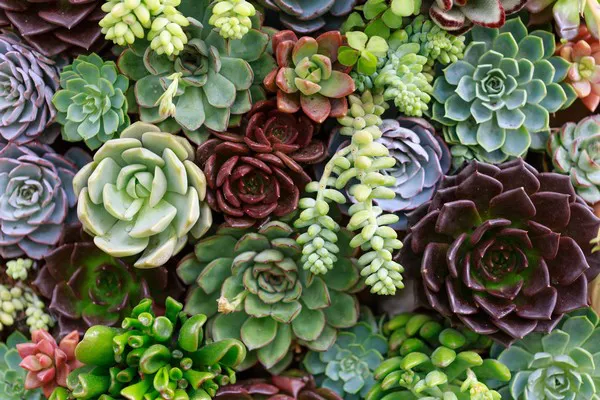Succulents have gained immense popularity in recent years for their unique beauty and resilience. Whether you’re a seasoned gardener or a novice plant enthusiast, potting succulents can be a rewarding and enjoyable experience.
Choosing the Right Succulents
The first step in potting succulents is selecting the right plants for your environment. Succulents come in a myriad of shapes, sizes, and colors, each with its own set of care requirements. Consider factors such as sunlight exposure, climate, and indoor versus outdoor settings when choosing your succulents. This critical decision sets the foundation for a successful and visually appealing succulent garden.
Selecting the Ideal Containers
Once you’ve chosen your succulents, the next crucial aspect is selecting the right containers. Succulents have specific needs when it comes to pots, and understanding these requirements is vital for their well-being. Opt for containers with drainage holes to prevent waterlogging, a common issue that can lead to root rot. Additionally, choose containers that complement the aesthetic appeal of your succulents and the overall design of your space.
Succulent-Specific Soil Mix
The foundation of a thriving succulent garden lies in the soil mix. Standard potting soils may not provide the well-draining conditions succulents crave. Create a succulent-specific soil mix by combining cactus mix, perlite, and coarse sand. This blend promotes proper drainage, prevents overwatering, and allows the succulents to establish strong root systems, essential for their overall health.
Understanding Light Requirements
Succulents are renowned for their ability to thrive in various light conditions, but understanding their specific needs is crucial for optimal growth. Most succulents prefer bright, indirect light, but the intensity can vary among different species. Ensure your succulents receive the appropriate amount of sunlight to prevent issues such as etiolation or sunburn. Experiment with placement until you find the perfect spot that caters to their light requirements.
Watering Techniques for Succulents
Watering is a critical aspect of succulent care, and mastering the art of hydration is key to their well-being. Contrary to common belief, succulents do need water, but they dislike soggy conditions. Implement a thorough but infrequent watering schedule, allowing the soil to dry out completely between watering sessions. This approach mimics the natural conditions of many succulent habitats, preventing issues associated with overwatering.
Feeding Succulents: Fertilization Tips
While succulents are known for their ability to thrive in nutrient-poor soils, providing them with a balanced fertilizer can enhance their growth and vibrancy. Choose a well-balanced, diluted fertilizer and apply it during the growing season, typically in spring and summer. Be cautious not to over-fertilize, as succulents are sensitive to excessive nutrients, which can lead to adverse effects on their health.
Potting Techniques for Succulents
When it comes to potting succulents, proper technique is essential for their long-term health. Gently remove the succulent from its nursery pot, being careful not to damage the roots. Place a layer of succulent soil mix in the new container, position the succulent in the center, and fill the remaining space with the soil mix. Allow the newly potted succulent to settle for a few days before resuming regular care routines.
Succulent Propagation: Multiplying Your Collection
One of the joys of succulent gardening is the ability to propagate and multiply your collection. Whether through leaf cuttings, offsets, or stem cuttings, succulents offer various propagation methods. Mastering these techniques allows you to expand your succulent garden, share your plants with friends, and experiment with different varieties. Propagation is a rewarding aspect of succulent care that adds a dynamic dimension to your gardening experience.
Dealing with Common Succulent Pests and Diseases
Despite their resilience, succulents are not immune to pests and diseases. Familiarize yourself with common issues such as mealybugs, aphids, and fungal infections. Implement preventive measures, such as inspecting your succulents regularly and maintaining proper hygiene. If issues arise, address them promptly using natural remedies or gentle insecticidal soaps to protect your succulents from potential harm.
Conclusion
In conclusion, potting succulents is a delightful journey that combines creativity, patience, and horticultural knowledge. By carefully selecting the right succulents, containers, soil mix, and understanding their light and water requirements, you can create a thriving succulent garden that adds a touch of nature to your living spaces. With proper care and attention to detail, your succulents will reward you with vibrant colors, unique shapes, and a sense of accomplishment in cultivating these remarkable plants.


